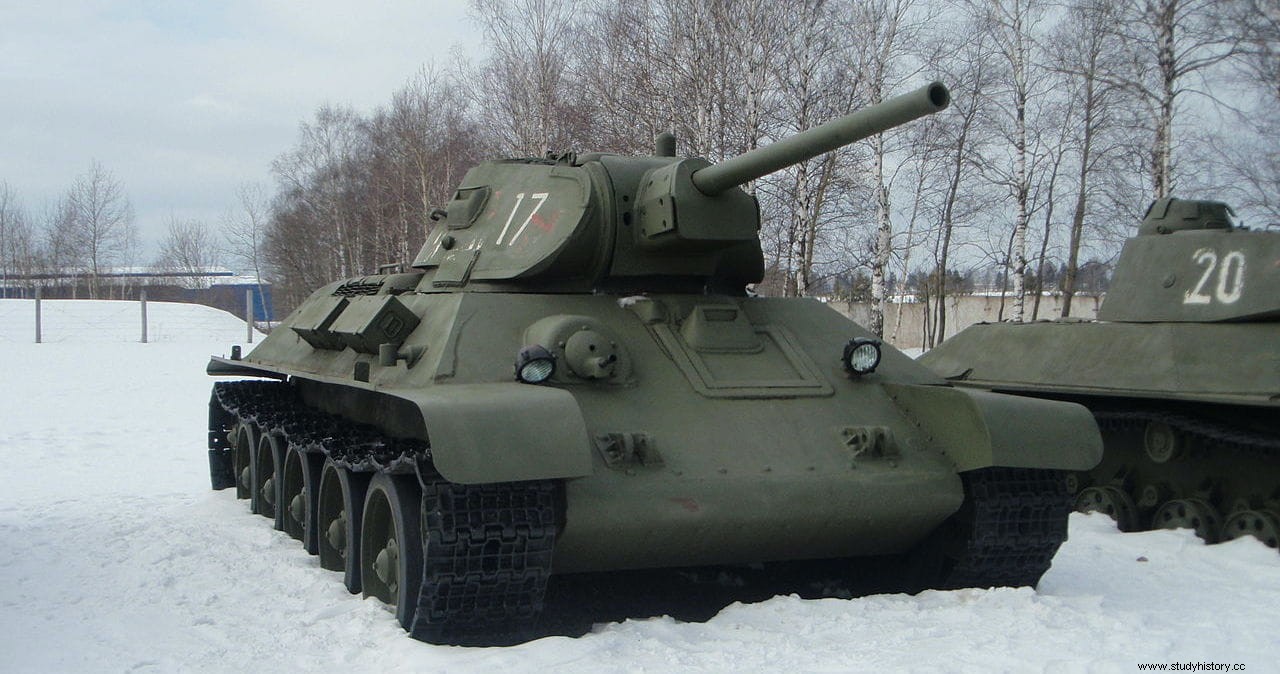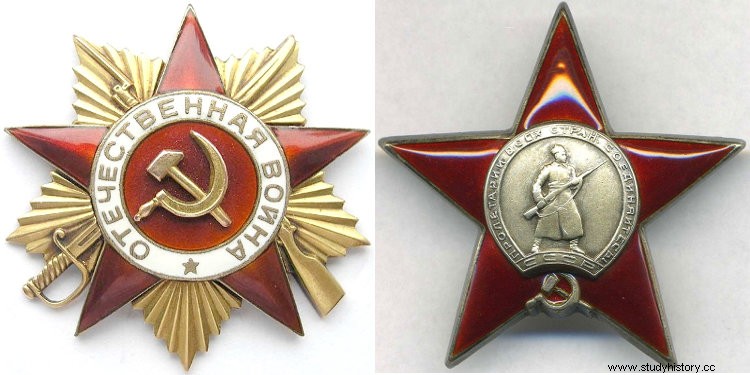War has always been, fundamentally, a man's job; at least when it comes to fighting at the front, where women only used to be various auxiliaries (bartenders, sanitary...), wielding weapons only in extreme cases. However, in the 20th century, female participation experienced a remarkable effervescence and the first big step in this direction, with the permission of the militia women of the Spanish Civil War, was taken by the Red Army during the Second World War.
In that contest, a few with their own names shone and probably many others made similar merits but, for various reasons, fell into oblivion or did not obtain as much popularity as the others. Thus, we can mention the four hundred aviators who formed the 588th Night Bombardment Regiment, better known as the Night Witches (also like Stalin's Hawks ), and in which Anna Timofyeyevna Yegorova, Nadezhda Vasilievna Popova or Yevgeniya Rudneva stood out.
There were also famous snipers like Tatiana Nikolaevna Baramzina, Aliya Moldagulova, Lyudmila Pavlichenko (Ukrainian), Marie Ljalková and Nina Alexeyevna Lobkovskaya, or guerrilla fighters like Elena Fedorovna Kolesova, Valeriya Osipovna and Tania Chernova. But in this article we are going to focus on the figure of Aleksandra Grigoryevna Samusenko, who excelled in a less common specialty:tank driver. She was not the only one, as they say, and we should also remember others like Mariya Oktiábrskaya or Irina Levchenko, but she does seem to have achieved more fame.
In Aleksandra's semblance, as she could not be otherwise, reality and fiction, history and legend, certainty and confusion are sometimes mixed. That is why an intervention in Spain during the Civil War is attributed to her, where, according to biographers such as Yuri Zukhov, the soldier Balandin told her that he had witnessed a conversation between her and a fellow machine gunner named Kalka, who claimed to remember her at the front of Huesca and even greeted her with the classic «They won't pass!» , to which Aleksandra replied that she did not remember him. However, another author such as Fabian Garin believes that it is an apocryphal anecdote and cites that Mindlin, the tanker's own boyfriend, denied that she had set foot on Spanish soil; in fact, by then he would have been fourteen years old and it seems highly unlikely.
Whether true or not, she enriches the issue from a romantic point of view and will delight the creators. Historians, on the other hand, will have to stick to the certain and verified facts with certainty. To do this, it is necessary to go back to Chitá, a Russian city in the eastern part of Siberia and the birthplace, paradoxically, of Lev Okhotin, one of the leaders of the PFR (Russian Fascist Party) that Konstantin Rodzayevski founded in the 1930s. In that city, in 1922, Aleksandra was born, although her entry into history with capital letters did not occur until a couple of decades later, when the Wehrmacht carried out Operation Barbarossa and invaded the USSR.
If we listen to another rumor, Aleksandra would have started her war activity a little earlier, in the Winter War (the one that the Soviets carried out against Finland from November 1939 to March 1940), although again there are those who questions. So it's the German invasion when it all starts strictly speaking. Like other young women, Aleksandra was not satisfied with watching the war from home or collaborating in the rear, so what is known in the Soviet Union as the Great Patriotic War led her to join the ranks of an infantry regiment .
She there she sent a letter to the Supreme Soviet requesting to enter the Tank Academy arguing her experience in mechanics. She was a pioneer in this because she was ahead of Mariya Oktyabrskaya, who was the first female battle tank driver in mid-1943, entering the fray in October as a sergeant in a tank with the pretty name Companion in arms (in whose construction she collaborated financially). But she Aleksandra followed in her footsteps as she would a score of other women; some died in action and others rose through the ranks to official status:Ludmila Ivánovna Kalínina, for example, reached the rank of colonel and others like Yevguéniya Serguéyevna Kóstrikova or Irina Nikolayevna Lévchenko received command of two groups of tanks (the second a company whole).

The fact is that Aleksandra was assigned to the 1st Guards Tank Army, reorganized in January 1943 by Mikhail Katukov with the remains of the previous one, which had been destroyed by the Germans at Stalingrad. In it, Aleksandra took part in Operation Uranus, the tense with which the Red Army surrounded Marshal Von Paulus in Stalingrad until his surrender at the end of 1942. Later, in the summer of 1943, she participated in the Battle of Kursk, the largest tanks of the war -and of history-, with more than four thousand units on the German side and five thousand on the Soviet side. Aleksandra's T-34, who was a liaison officer, was attached to a corps made up of between five and eight hundred tanks, and she was responsible for quite a feat:shooting down three Tiger I, thus collaborating not only in the victory but also in the collective decoration awarded after the conflict, the Order of the Red Star.
Shortly after, in another action, Aleksandra was covered in glory when she replaced the battalion commander, who had fallen, managing to get his own out of an ambush. Not surprisingly, that same year she in turn received promotion to major - she became the first tank commander of the USSR - and the Order of the Patriotic War First Class. Her resume also includes the Léopolis-Sandomierz Offensive (Ukraine, July 1944) and the taking of Berlin in April 1945, being part of the occupation troops in Germany based in the city of Dresden.

Two episodes give a human patina to this almost exclusively warlike life. The first occurred when she met the aforementioned Mindlin, her boyfriend, who convinced her to give up tobacco and drinking; hobbies, apparently, linked to her hard work. The second occurred in January 1945 when he ran into an American sergeant from the 101st Airborne Division named Joseph Beyrle in Poland, who had escaped from Stalag III-C, a prison camp for Allied soldiers located near present-day Drewice (about eighty kilometers from Berlin).
Beyrle was quite a character who would deserve his own article; here suffice it to say that he asked Aleksandra to join his ranks on the way to the German capital and obtained authorization, thus becoming the only American soldier who fought in the Red Army during World War II (for one month) and was able to display medals of both countries. Beyrle's interest is twofold because he provided some information about the little-known life of her new officer, such as the fact that he had lost his entire family in the conflict.

She herself met the end of her life in a tragic way, before she could see the final victory in the war. She is tragic and quite absurd, as often happens, since her death was caused by an accident when she was crushed under the tracks of a tank in the context of the offensive in Pomerania. Not because of an enemy car but her own:her driver did not see her because it was night. She was on March 3, 1945 in the German town of Zülzefitz (now Suliszewice, Poland), about seventy kilometers from Berlin. Her mortal remains rest in the Polish city of Lobez, near the monument erected in memory of Kaiser Wilhelm I.
